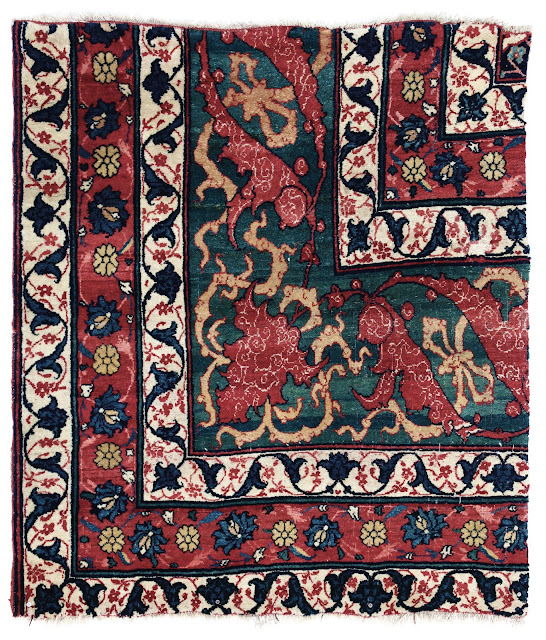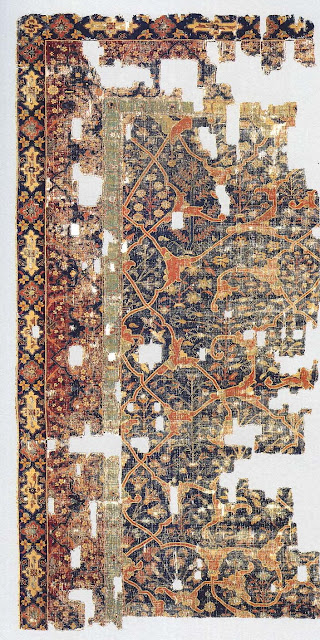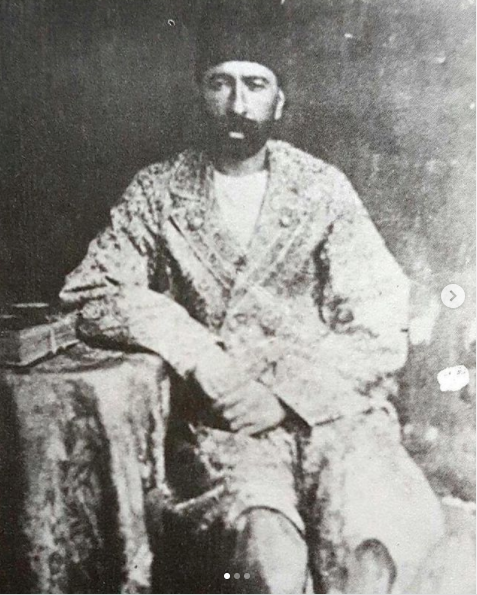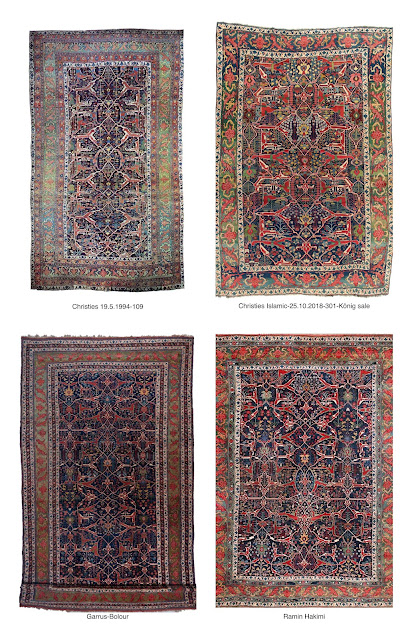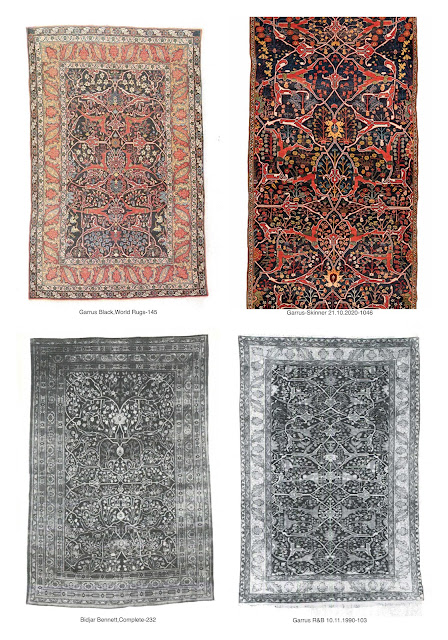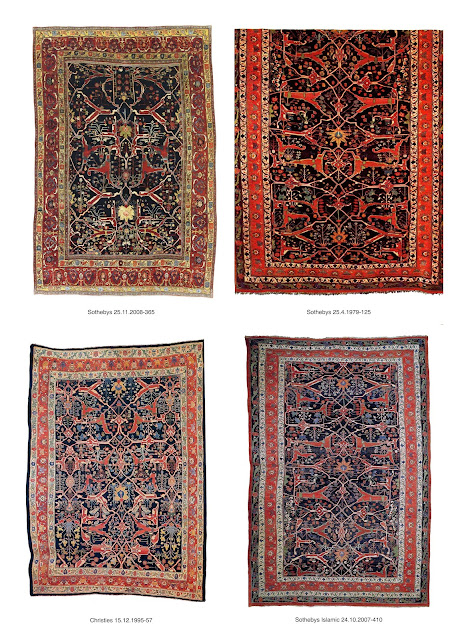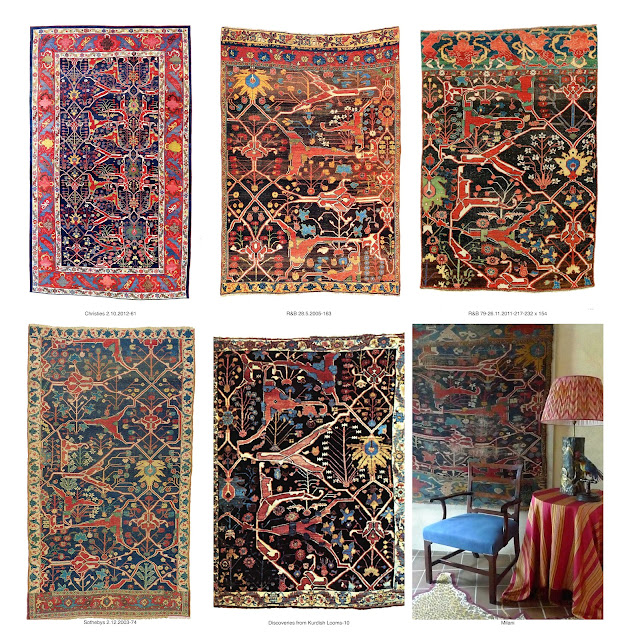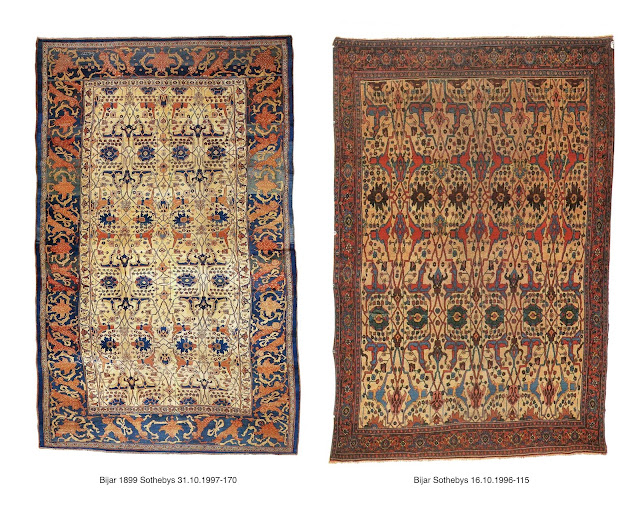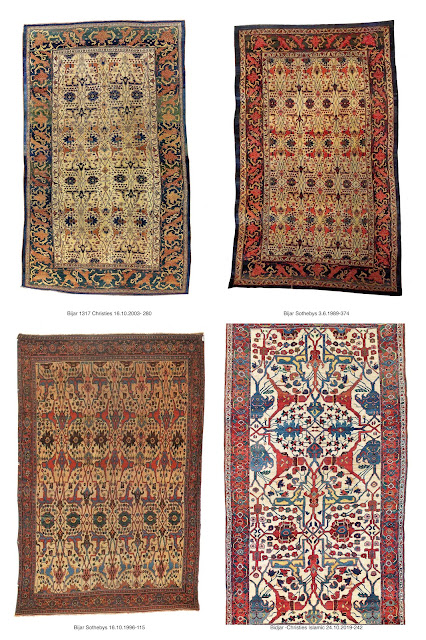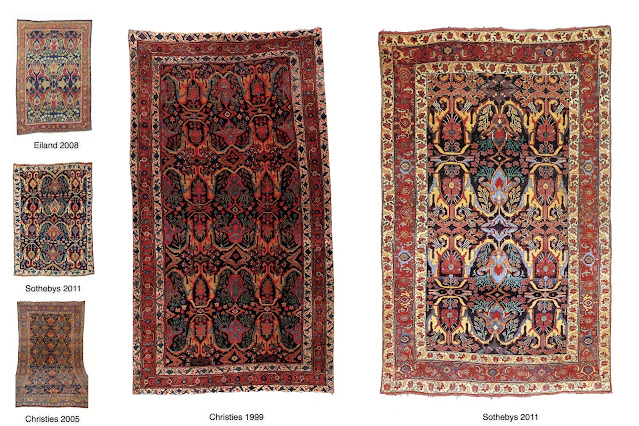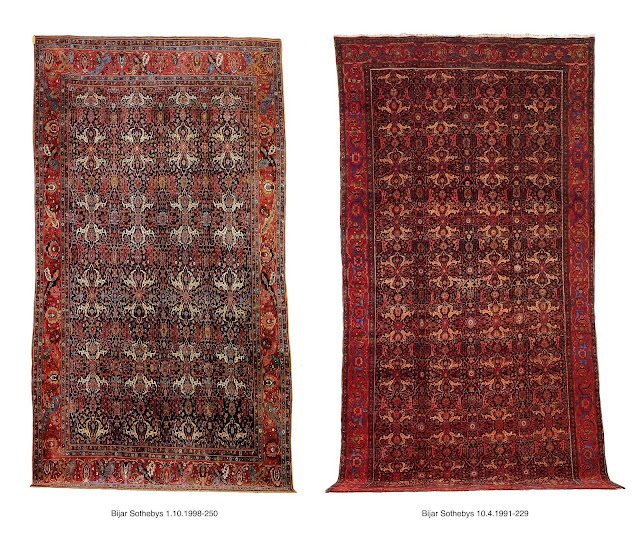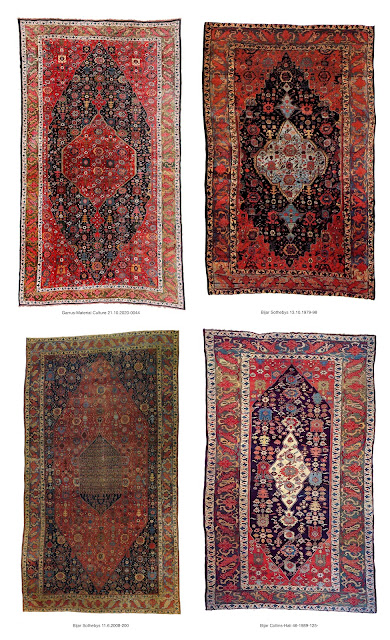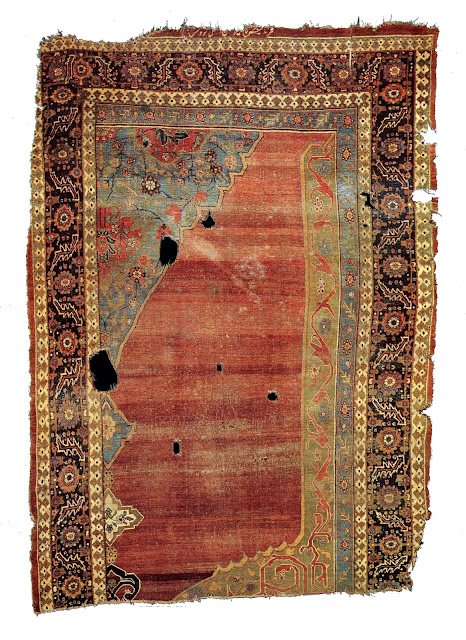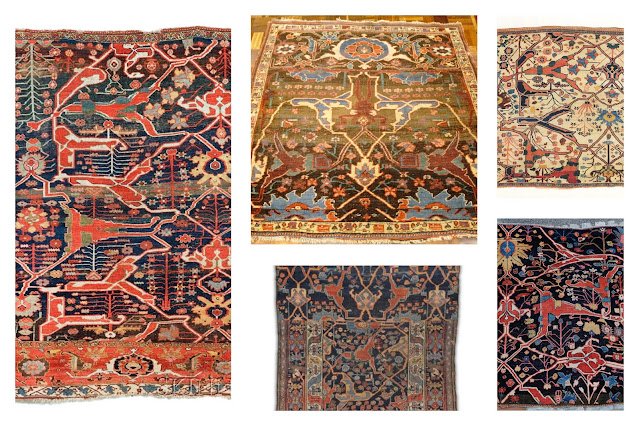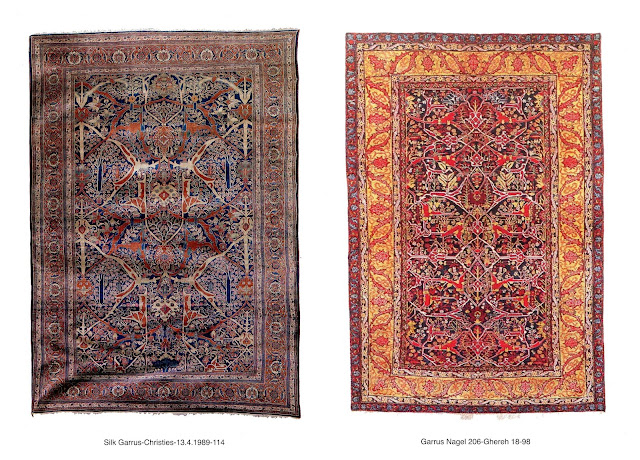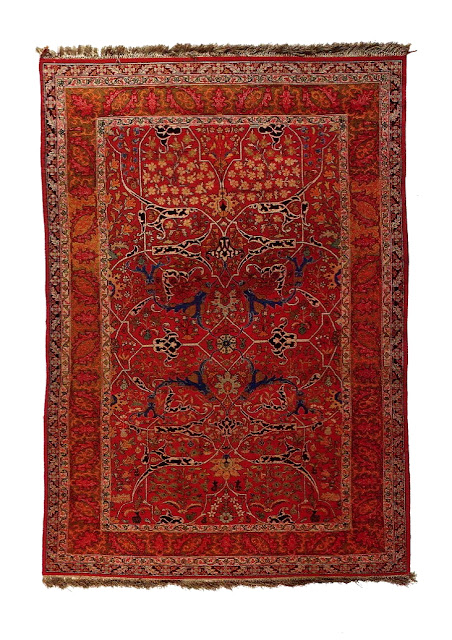Rugtracker’s archaeological programme consists of excavating shards from a large site of literature and assembling them into a whole. Sometimes later things can provide a spark for an in-depth study. What is late for us will not be thus viewed in fifty or a hundred years from now, although who knows in what form rug studies might then materialise?
A case in point is the occasional appearance of worthy atavisms on the internet.These are throwbacks which rarely make it into the press or the standard works.They also help us view the past through the eyes of carpet weavers for whom the tradition was still fresh.
Under consideration are the rare group of Salor 9 medallion bag faces, which may not have been made by a tribal group known as the Salor, and which may also never have been bags, as no example is known with a back. However, backs were(and are still) removed in order to simulate age, and for the feet of philistines. The 9-medallion group are considerably scarcer than the 16-medallion variety, of which 29 examples have been recorded. They mostly employed the quartered medallion form, with a few rare and immaculate pieces featuring the arabesque-cross centre.This device is used as the secondary on trappings where the arrangement has been reversed-i.e it functions as the secondary motif, and the secondary of the chovals is used as a primary. It features on the Kedjebe trappings and also on the Memling-göl torbas. The Salor used a limited repertoire of designs which combined well with each other and simplified their difficult work.
Of the type with an arabesque-cross centre 8 examples are known, including three probable pairs (Group A)
Of the type with a quartered centre 6 potential examples are known, with no likely pairs (Group B)
Group A.
 |
| 1 |
1) Two pieces which were sold at Rippon Boswell in 2007 (Left) and 2017 (Right) Superficially close but the right-hand example is a much later contrivance-its mechanical elem in the Saryk style betrays it.The 2007 rug is a rough-hewn monster which sold for 30,000 euro;the 2017 rug sold for 3000 euro. The cheaper of the two is so perfect that it seems to have stopped breathing, whereas the 2007 piece has constantly varying göl shapes-the description of a struggle.
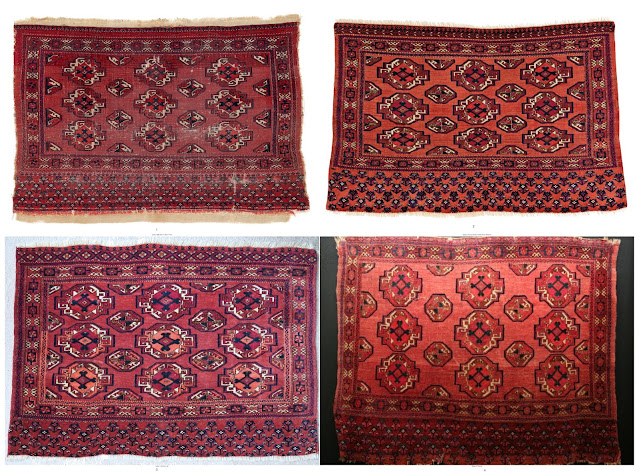 |
| 2 |
 |
| 3 |
3) Four classic-phase examples,clockwise: RB 2007-Royal Museum Ontario,published in Turkmen,Thompson/Mackie Nr.6-A fragment in Moscow-and the pair published in Azadi/Andrews,Wie Blumen in der Wüste,Nrs. 100 and 101.The Ontario rug is seriously compromised by smoked colour,and an alternative reproduction would be interesting to see.However, it is one of the most elegant.Little is known of the Moscow fragment: one cannot even be sure if it is a nine or 16 göl example.The tree elem is rare in this group but common on the standard Salor choval panels.The BitW pair are an immaculate quality of a different type to the rustic style as typified by Dr.Baumann`s couple-
 |
| 4-left:BitW; right:Baumann Collection Austria. |
4) The two pairs are shown as they may have lain on the loom.All nine-medallion examples with the arabesque-cross have a cut secondary on the lateral sides with the exception of the BitW pieces, which show a complete secondary göl,as in two Tekke examples with the same design-
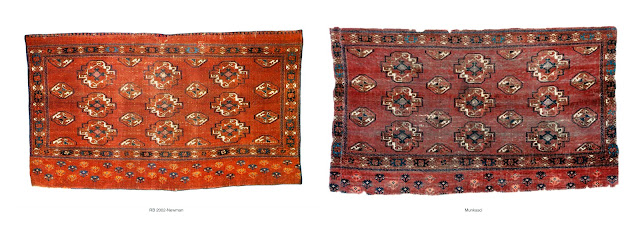 |
| 5-left:RB-Newman;right-K.Munkasci |
5) Despite an odd APG in Hali 124-139, the Rippon Boswell-Ronnie Newman rug has been clearly identified as Tekke work, presumably on the basis of a right-hand open knot, and the analysis of Jurg Rageth revealed the same technique in the Munkasci piece.The pair from Peter Baumann have been twice described as Persian-knotted open to the right, as are a number of otherwise cast-iron Salors.
6) The most formidable of all such chovals divide their time between Saint Petersburg and the Italian dealer Albert Levi-
 |
| 6-Levi-Bogolubov |
The killer-application here being of course the secondary motif, no doubt derived from some ancient Sogdian textile,such as an example in the Stiftung Abegg-
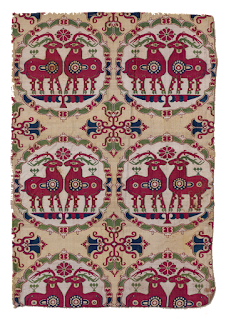 |
| 6a-Riggisberg |
Group B.
 |
| 7-Bob Emry-RB-AAC |
 |
| 8 |
9) Two further mutations appear to have been produced by a Yomut weaver-perhaps more piracy.The rug from Kurt Munkasci has a charming elem probably derived from a Tekke chirpy.A piece at Rippon Boswell in 2016 went unsold, perhaps due to its 11,000 euro estimate.It had the correct left-open structure with depressed warp though.
 |
| 9 |
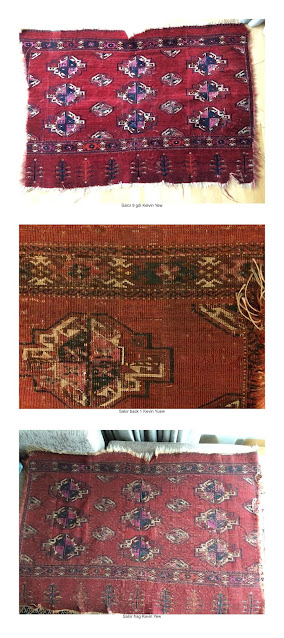 |
| 10-Kevin Yuew |










